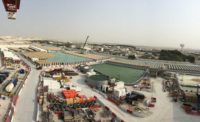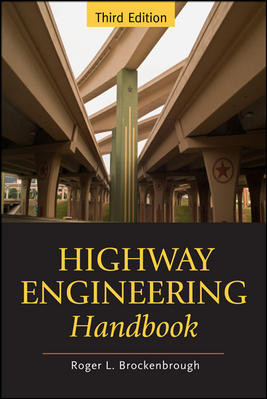Global Best Projects 2018
Global Best Projects 2018, Road/Highway & Project of the Year Finalist: Lusail Expressway

Two 6-m-deep concrete foundations support and tie down the 9,000-ton steel arches at the nearby interchange.
PHOTO BY PEDRO CLAUDINO

Special visual effects are generated for travelers moving at highway speed to evoke the sense of swimming under the sea.
PHOTO BY ABSHAR KADER

Special visual effects are generated for travelers moving at highway speed to evoke the sense of swimming under the sea.
PHOTO BY PEDRO CLAUDINO

An unusual number of temporary workers was required for the assembly of the arches’ 54 segments, much of which was done during the cooler hours of the night. Some 5,000 workers from 26 countries labored during the project’s five-year life with no fatalities.
PHOTO BY ABSHAR KADER

An unusual number of temporary workers was required for the assembly of the arches’ 54 segments, much of which was done during the cooler hours of the night. Some 5,000 workers from 26 countries labored during the project’s five-year life with no fatalities.
PHOTO BY ABSHAR KADER

The total expressway project consisted of two marine bridges, multiple tunnels and three multilevel interchanges, yet it is but part of a $28-billion program to upgrade national infrastructure before soccer’s 2022 FIFA World Cup.
PHOTO BY PEDRO CLAUDINO

The total expressway project consisted of two marine bridges, multiple tunnels and three multilevel interchanges, yet it is but part of a $28-billion program to upgrade national infrastructure before soccer’s 2022 FIFA World Cup.
PHOTO BY PEDRO CLAUDINO

The total expressway project consisted of two marine bridges, multiple tunnels and three multilevel interchanges, yet it is but part of a $28-billion program to upgrade national infrastructure before soccer’s 2022 FIFA World Cup.
PHOTO BY PEDRO CLAUDINO








Lusail Expressway
Doha, Qatar
Best Project & Project of the Year Finalist
Owner Ashghal—Public Works Authority
Lead Design Firm AECOM
General Contractor Hyundai Engineering & Construction
Project Manager KBR Government Services
The Lusail Expressway project reconfigured 6 kilometers of urban roadways into a free-flowing expressway in Doha, Qatar. It links the old Doha city center to the vibrant Lusail City/Pearl Development residential communities and recreational hubs springing up along the coast.
Construction included the creation of three major grade-separated interchanges, road tunnels, underpasses and flyovers and two marine bridges. The network is crowned by a signature, 103-meter-high, double-arch monument that towers above one of the more complex intersections.
Beyond service as a transportation corridor, the centerpiece of the expressway is a complex 1.6-km-long section around the arches that also delivers as an artscape produced by a synthesis of multiple art forms. The design for the arch and flowing roadways around it was imagined by Erik Behrens, creative director and design studio lead at AECOM Architecture. Behrens believes the result is one of the largest pieces of public art ever created.
Because the expressway connects the older part of the city to new neighborhoods on the coast, it literally connects the past to the future through the gateway. Behrens says the forms and features of the arches pay homage to Doha’s historic relationship with the sea and the generations of pearl divers, with their nets and oyster satchels, whose harvests of treasure supported the initial growth of the state.
Consisting of 54 steel segments whose assembly topped out in January 2017, the two outward-leaning arches are connected with a cable net and form a changing composition as drivers traverse the gateway. A continuous graphic on the walls of tunnels and retaining structures—which was designed using animation technology to study the effect created when travelers pass through at highway speeds—evokes the experience of swimming under the sea and emerging through the waves. “It’s a very dynamic sculpture that comes alive when moving around it,” Behrens says.
Among the many challenges was a trade embargo imposed by surrounding countries in the last seven months of construction. Another was building three-level interchanges in confined urban spaces while keeping traffic flowing. Notably, at the interchange adjacent to the arches, the roadway network connects a light-rail tunnel 25 m deep, two overlapping highway tunnels, surface roadways and a flyover. The design and construction team of AECOM, KBR, CDMS, the main contractor HDEC and its multiple subcontractors worked closely with the client, Ashghal, the public works authority of Qatar, to complete the project in April.
The five-year project consumed 75,000 tons of steel and 345,000 tons of asphalt. Six km of utility corridors were constructed to integrate electricity and telecommunication networks within the route. More than 5,000 workers from 26 different countries completed more than 63 million labor hours, with a lost-time injury rate of 0.03 and a total record












